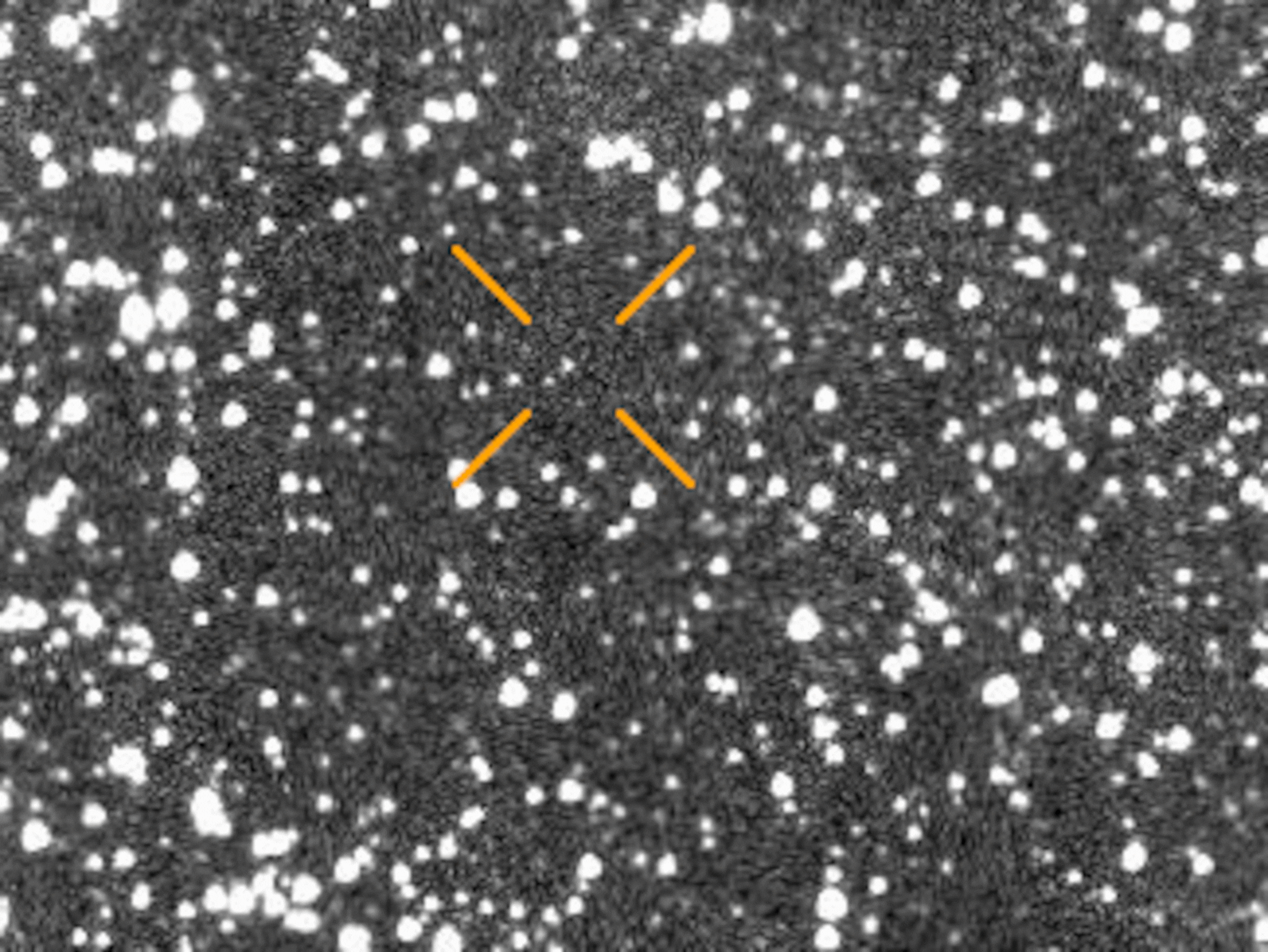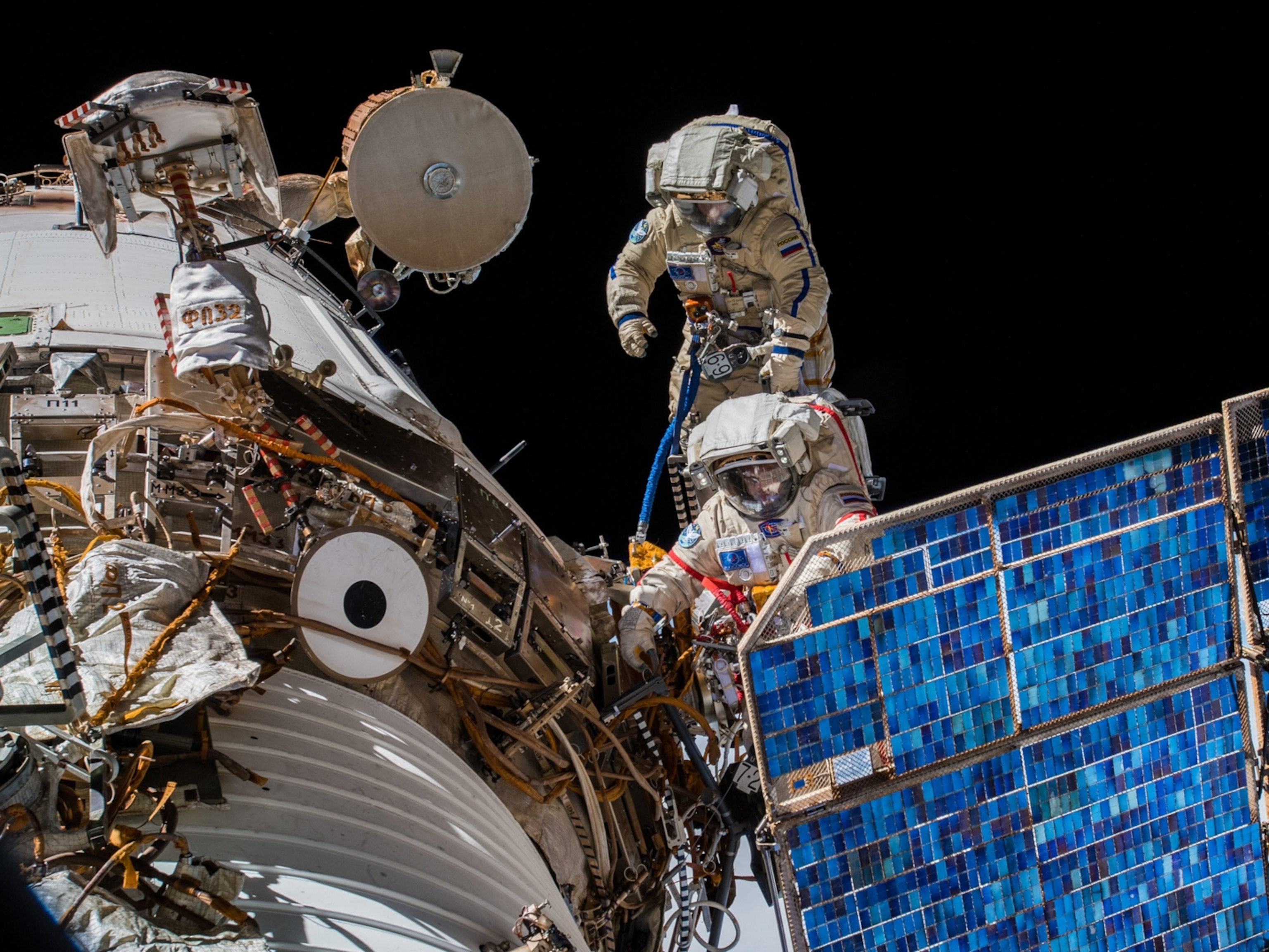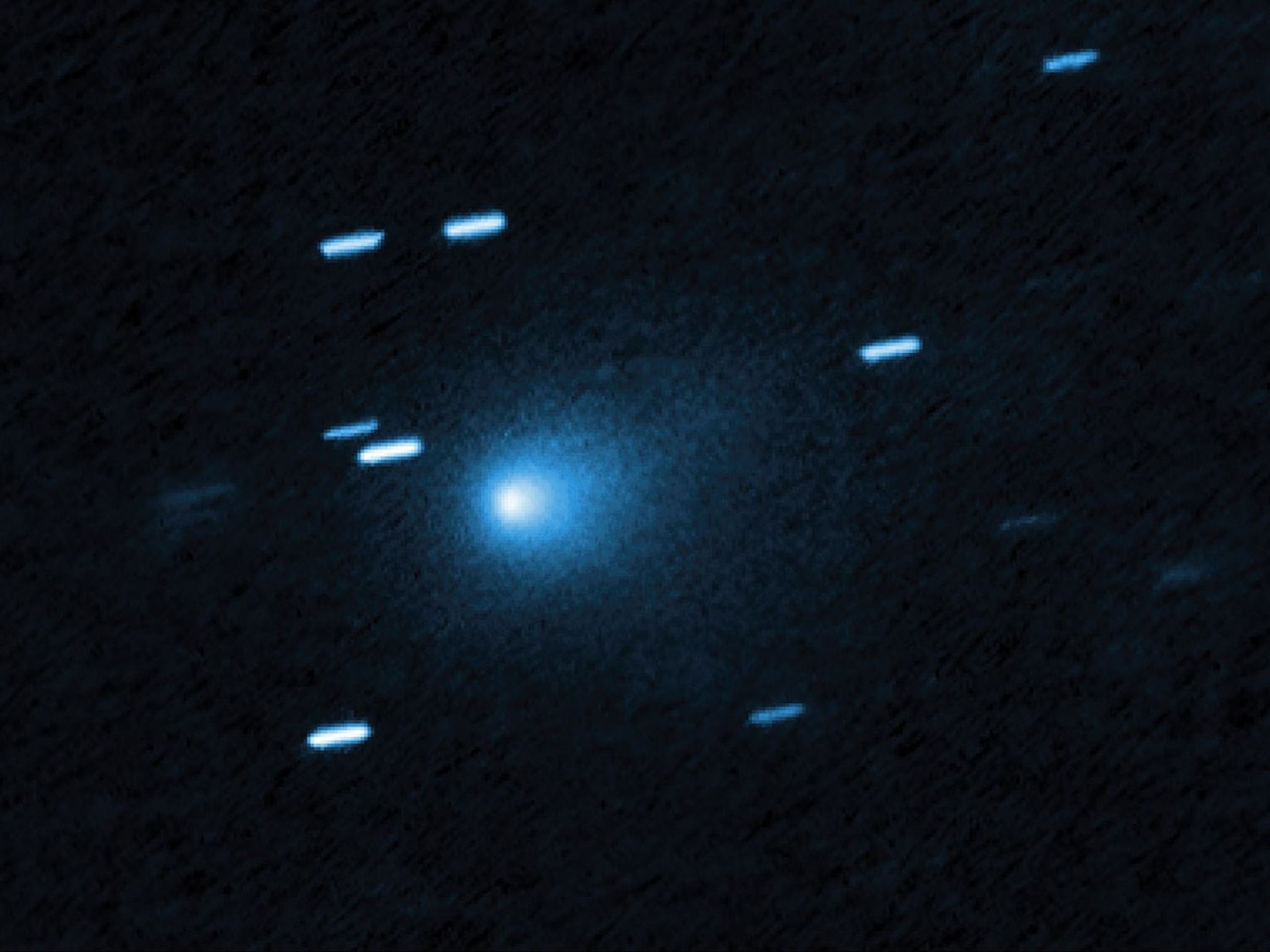
Approaching Asteroid May Get Close Enough to Smash Satellites
Newfound space rock will buzz Earth in February, astronomers report.
A newly discovered asteroid called 2012 DA14 will pass so close to Earth in February that it might hit a communications satellite, scientists say.
"That's very unlikely, but we can't rule it out," said Paul Chodas, a planetary astronomer at NASA's Jet Propulsion Laboratory (JPL) in Pasadena, California.
Discovered several weeks ago by astronomers at the LaSagra Observatory in Spain, the asteroid is currently "a fuzzy little blob," as seen through telescopes, said Steven Chesley, also at JPL.
Astronomers estimate that the space rock is just 150 feet (45 meters) wide. But "the orbit for 2012 DA14 is currently very Earthlike, which means it will be very close to Earth on a regular basis," Chodas said.
Based on current projections, the asteroid could swing close enough to our planet to disrupt some orbiting satellites on February 15, 2013. The International Space Station, circling the planet in low-Earth orbit (about 1,200 miles/2,000 kilometers up, or closer), is in no danger, Chodas said.
(Find out about an asteroid that crossed between Earth and the moon last June.)
However, the newfound object's orbital path is still being refined. "We don't know exactly where it is, and that uncertainty maps through to an uncertainty in the orbit and predictions," Chesley said.
For now, the astronomers aren't worried about the asteroid actually falling from the skies next winter.
Instead, 2012 DA14 could put on a show for sky-watchers as it zips past the planet.
"It might be visible to people with good binoculars or a small telescope," Chodas said. "For such a small object, that's really unusual."
Asteroid to Eventually Hit Earth?
NASA currently estimates that the likelihood of 2012 DA14 striking Earth anytime in the next several decades is 0.031 percent—a figure that will be refined after astronomers collect data on its close pass next February.
But considering the uncertainty, scientists can't rule out the possibility that the asteroid might hit Earth on a subsequent pass, including the next flyby in 2020.
Figuring out the risk will depend on precisely how close 2012 DA14 comes to Earth in February. That's because the closer it comes, the more the pull of Earth's gravity will change the asteroid's orbit, adding to the uncertainty of the predictions.
(Related: "Trojan Asteroid Found Sharing Earth's Orbit—A First.")
If it does hit either in 2020 or later, the asteroid is small enough that it wouldn't be a civilization-destroying hazard. Also, the rock approaches Earth from the south, making Antarctica or the Southern Ocean its most likely targets.
Still, if the asteroid were to hit land, the impact of the 140,000-ton rock would release energy equivalent to a 2.4-megaton explosion, Chodas and other NASA scientists have calculated.
That puts the space rock in the same class as the 1908 Tunguska blast, a mysterious event, likely tied to an asteroid or comet, in which hundreds of square miles of forest in Siberia were leveled. (See "A Hundred Years After Tunguska, Earth Not Ready for Meteors.")
If the asteroid were to strike the ocean, Chodas added, it would produce a tsunami, although "it probably wouldn't be big."
We're "On Top of It"
In general, the upcoming 2013 flyby "is an ideal opportunity to study one of these objects in unprecedented detail and gain scientific as well as practical info, in case we ever have to deflect it," Humberto Campins, an asteroid specialist at the University of Central Florida, said by email.
(Related pictures: "NASA Lands on Underwater 'Asteroid.'")
JPL's Chesley agrees, adding that finding 2012 D14 is good news, because the object is now on the list of near-Earth asteroids that we can see coming.
"We're now on top of it," he said. The really dangerous ones, he added, are those we haven't yet spotted.
The newfound asteroid was described this month at a meeting of the American Astronomical Society's Division on Dynamical Astronomy in Timberline Lodge, Oregon.





